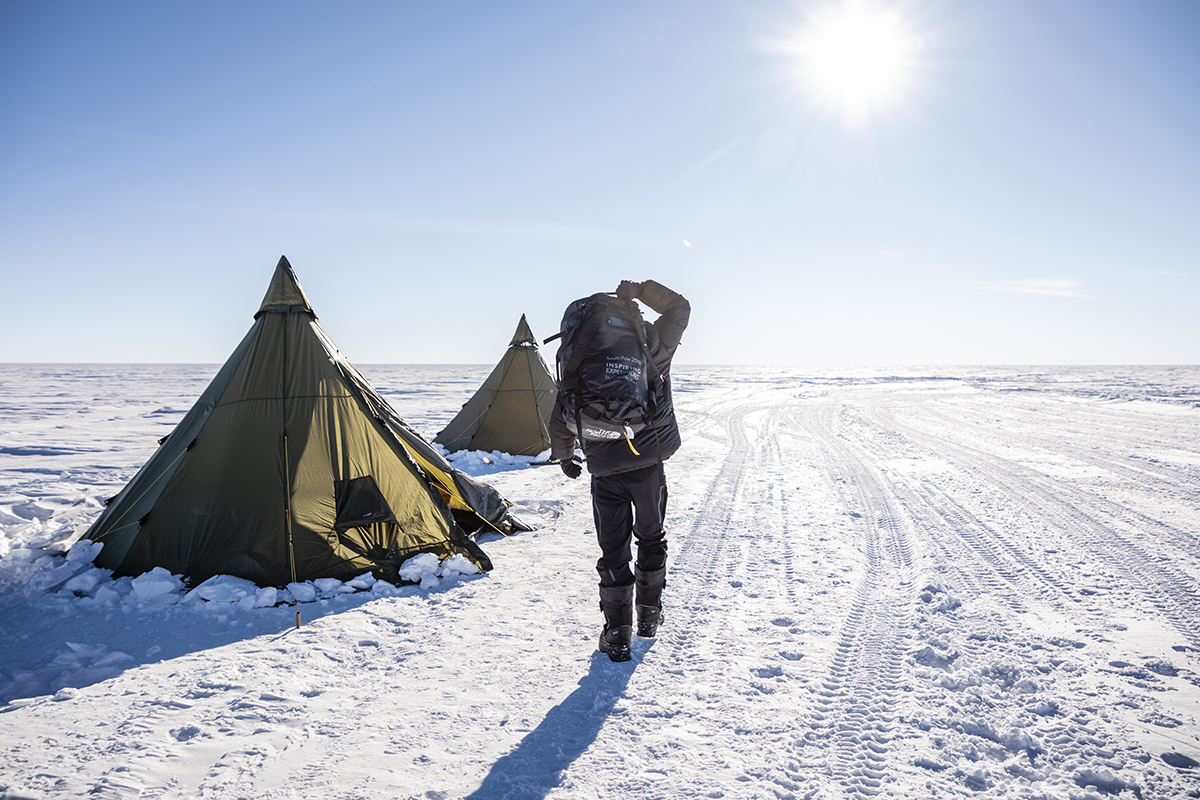
An explorer sets out on Day 6 of the recent A&K South Pole expedition. Image courtesy of Abercrombie & Kent
At the age of 76, LUX contributor and founder of luxury travel company Abercrombie & Kent Geoffrey Kent is still adventuring. Here he recalls one of his most recent and challenging expeditions into the South Pole
For the last three years, I have been occupied with a desire to go on a journey to Antarctica. Like my hero of heroes, Sir Ernest Shackleton, I dreamed of getting to the South Pole. Unlike Shackleton, who led three British expeditions to the Antarctic, I wanted to do it in comfort and five-star style.
Adventure is in my genes, and since my parents and I founded A&K in 1962, I’ve packed a lot in. I’ve climbed Kilimanjaro, hiked to Tiger’s Nest in Bhutan, and circled the earth along the equator. I’ve journeyed from the source of the Upper Amazon to where it meets the Atlantic Ocean and been to Iraq with some special forces’ guys. I have been to the edge of space in an English Electric Lightning, travelling Mach 2.2 at 21 kilometres up, and hiked to Base Camp Everest. I was officially the last person in the twentieth century to stand on the North Pole.
Follow LUX on Instagram: the.official.lux.magazine
My recent expedition to the South Pole is my latest and perhaps most challenging adventure. Like all dedicated travellers, my wanderlust constantly drives me. I’m obsessed with the app Been, which reveals that I have visited 70 per cent of the world’s countries (I travel approximately 270 days each year). In the next few years, I want it to be 100 per cent. The desire to see the whole world is the driving force behind Inspiring Expeditions by Geoffrey Kent.
In December 2018, seven intrepid guests and I spent the latter part of December in the vast wilderness that is Antarctica. Another continent ticked off – a personal dream fulfilled.
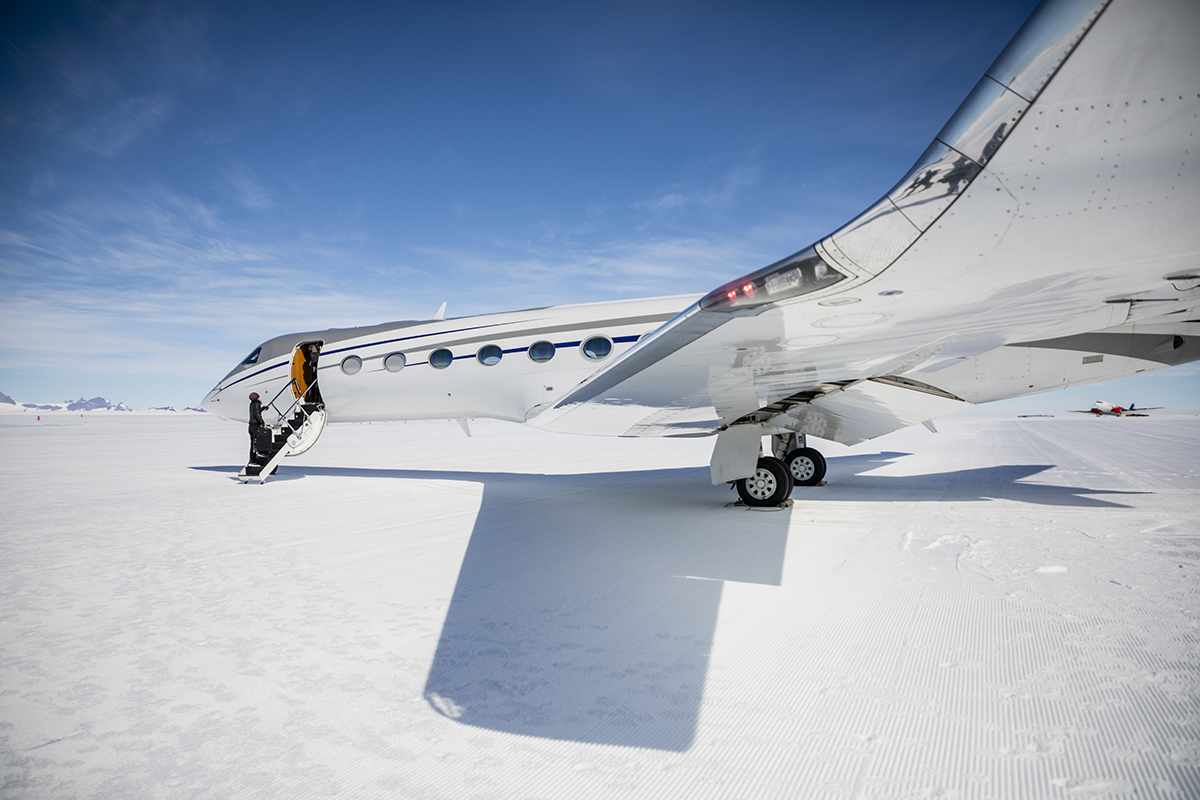
Day 12: arriving by private jet into Whichaway Camp. Image courtesy of Abercrombie & Kent
When most people speak of having been to Antarctica, they have travelled by cruise ship from Ushuaia to the Antarctic Peninsula, a 1,300-kilometre chain of mountains and volcanoes that juts north towards South America. My expedition was to a dramatically different destination. The Antarctica that I’m talking about can’t be accessed by cruise ship. To get to the South Pole, you need a plane and skis or snowmobiles. Antarctica is vast – mind-bogglingly big. To put it in perspective, from our base inside the Antarctic Circle to get to the South Pole required an eight-hour flight, a re-fuelling stop and the crossing of a time-zone.
Our group – consisting of one couple and their two sons, a father and son, and me – set off from sunny Cape Town in mid-December. We landed on the first of three ice runways (or more aptly iceways) that A&K constructed in Antarctica for this journey and got our first glimpse of the land of snow and ice at a place dramatically named ‘Wolf’s Fang’.
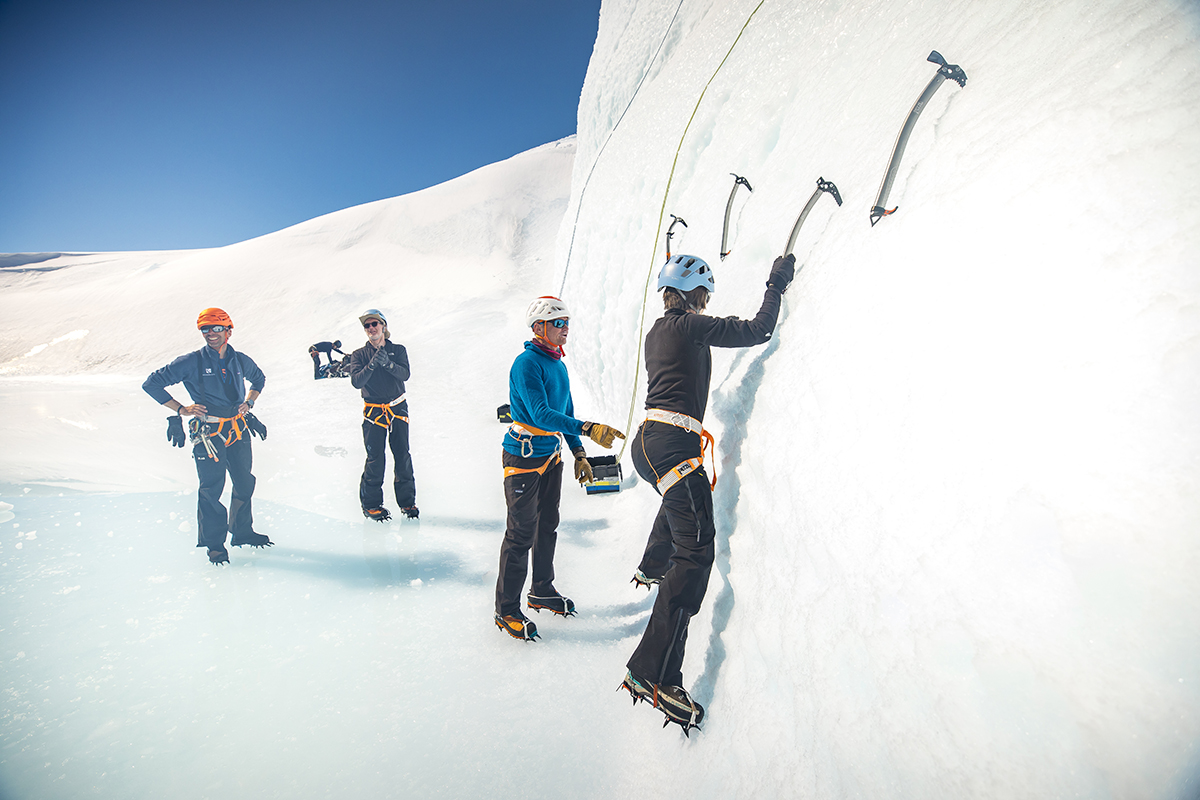
Day 8: ice climbing. Image courtesy of Abercrombie & Kent
There are no wolves for thousands of kilometres, just the occasional snow petrel flying overhead. Antarctica is a high desolate white desert where temperatures in summer rarely get above minus 20 degrees Celsius and the winter average is minus 60. It never rains here and the snow that falls is sparse. With less than 20cm of snowfall a year, Antarctica is technically a desert. It is so dry that with the correct kit on, you feel colder on London’s streets on a particularly grim day.
Read more: Italian brand Damiani’s Kazakh-inspired jewellery collection
It’s the last true wilderness on our planet. The last frontier – the final place on the planet where a traveller can feel genuinely remote and know that your footprints may be the first, that no other human may have walked here before. And if they have… what a club to be part of.
From our basecamp in an oasis – a series of rocky outcrops amongst the ice – over the course of eight days, our group flew to Atka Bay to view the large colony of Emperor penguins. There, we also learned essential winter skills, explored ice caves, visited both Russian and American research stations, summitted (and earned the right to name) a peak in the Drygalski mountain range, and ventured to the Geographic South Pole.
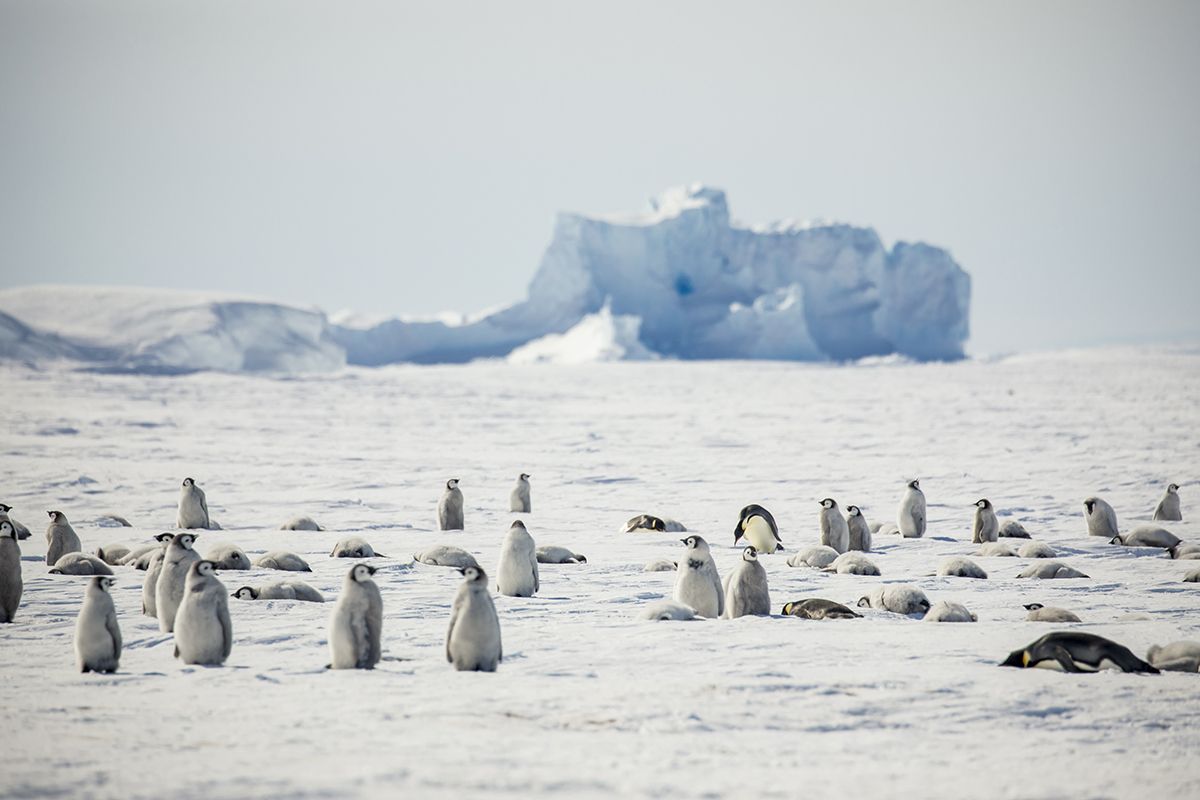
Day 4: visiting the Emperor penguins. Image courtesy of Abercrombie & Kent
From the top of ‘Mount Inspiring’ – the virgin mountain which our group summited in the company of Marko Prezelj, four-time Piolet d’Or winner – staring over this vast expanse of white in awe of nature at its most elemental, it’s hard to imagine the flux that this continent is undergoing. Sadly, Antarctica has experienced an air temperature increase of three degrees Celsius. This rise in temperature is causing change – perennial snow and ice cover are melting, glaciers are retreating, and some ice shelves have collapsed completely. In the last 60 years, there has been a loss of 25,000 square kilometres of ice shelf. The flora and fauna are facing a threat too. Emperor penguin numbers have declined by up to half in some places and the number of breeding pairs may fall by 80 per cent by 2100.
Read more: The poetic beauty of the Swiss Engadine
One of the greatest, yet least seen, wildlife spectacles on the planet, the colony of 6,000 breeding pairs at Atka Bay is extraordinary. Two and a half hours by airplane away from basecamp, thousands of adolescents were finding their feet and snow bathing to cool off in strong sun, while their parents fished. These animals are under threat from human action from thousands of kilometres away.
We reached the Pole two days and one hundred and seven years after Roald Amundsen, a Norwegian explorer who won the race to the South Pole, just ahead of Scott. Standing at the designated marker at the lowest point on earth, you are able to walk around the world in a few steps. Surrounding the marker are flags from the twelve signatories of the Antarctic Treaty that sets aside the continent as a scientific preserve. It was a good place to reflect on the adventure of getting here and wondering about what’s going to become of this white desert… and what we all can do about it.
Discover Abercombie & Kent’s portfolio of luxury travel tours: abercrombiekent.co.uk
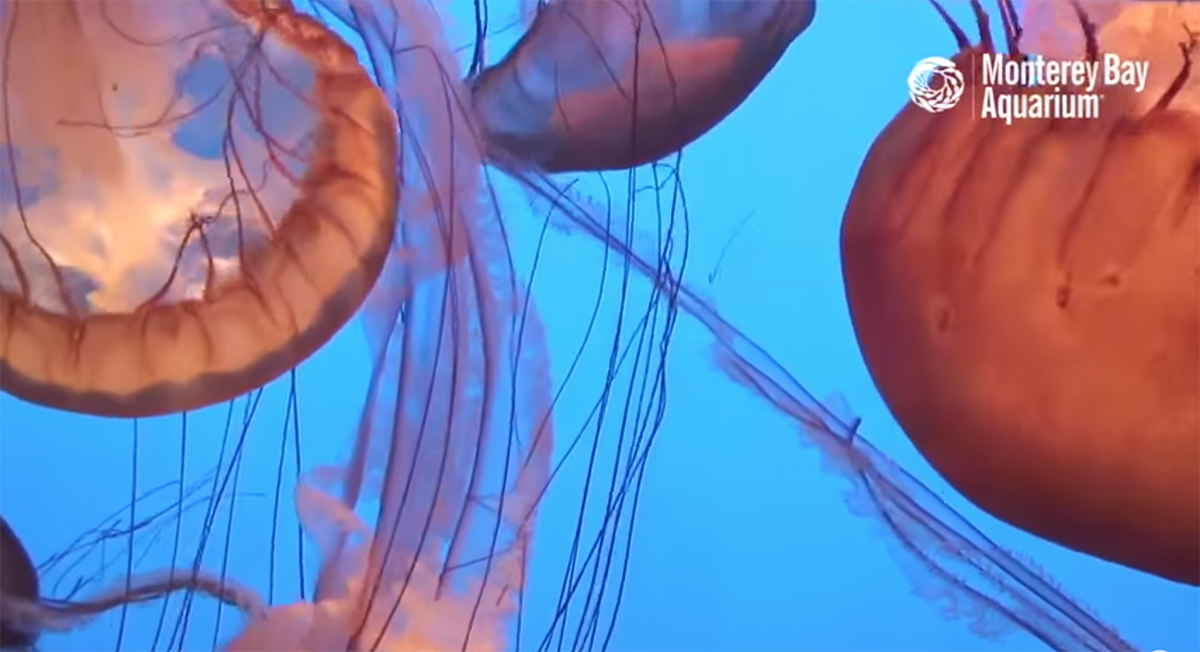
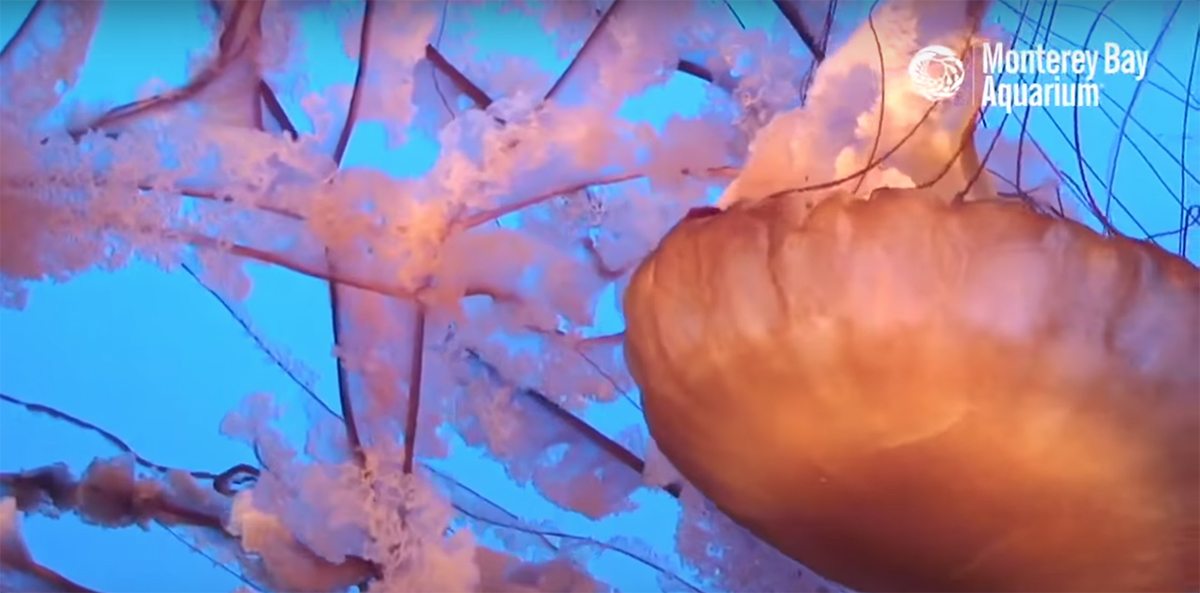

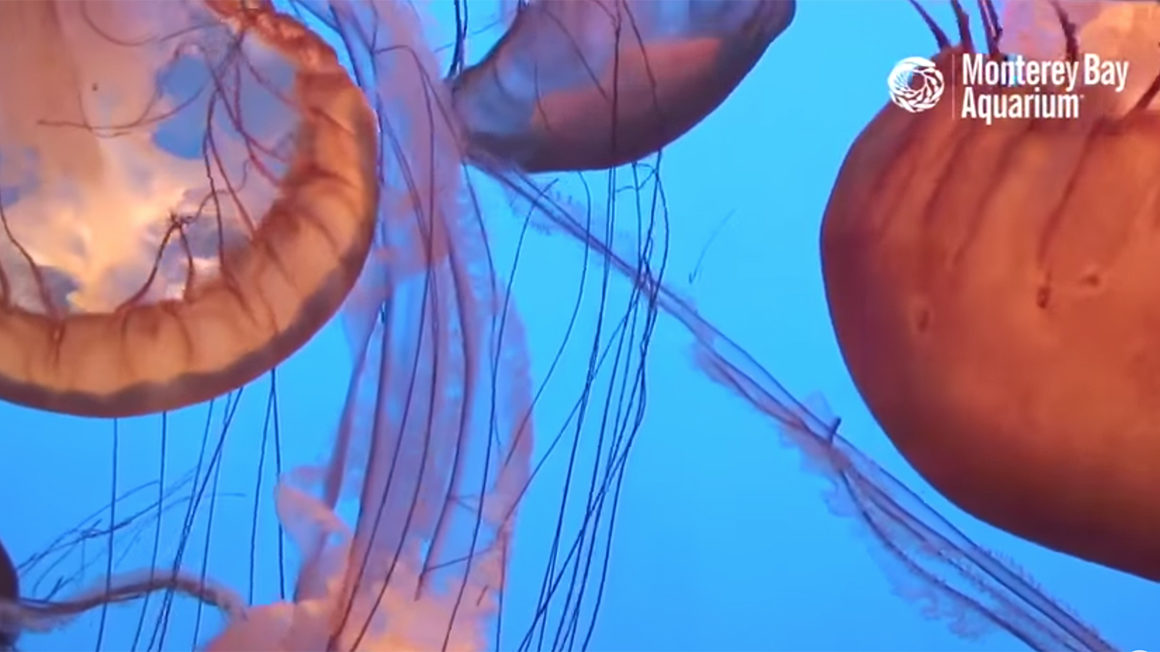
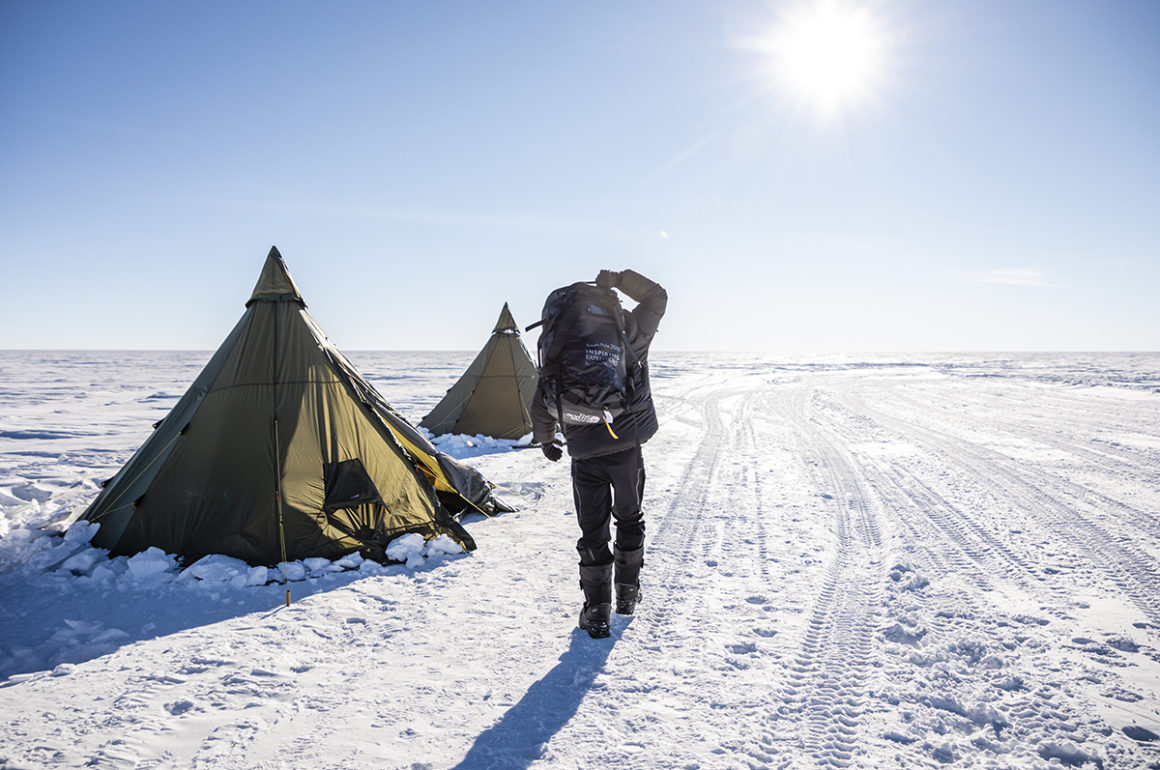




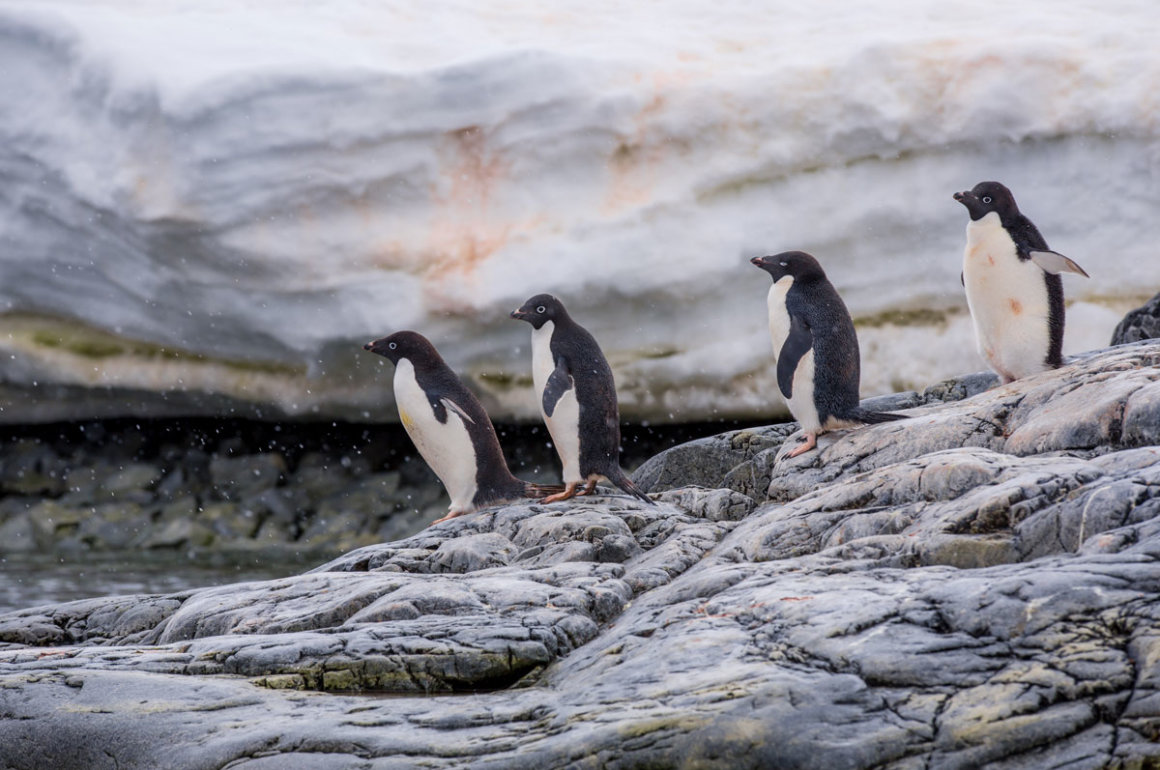
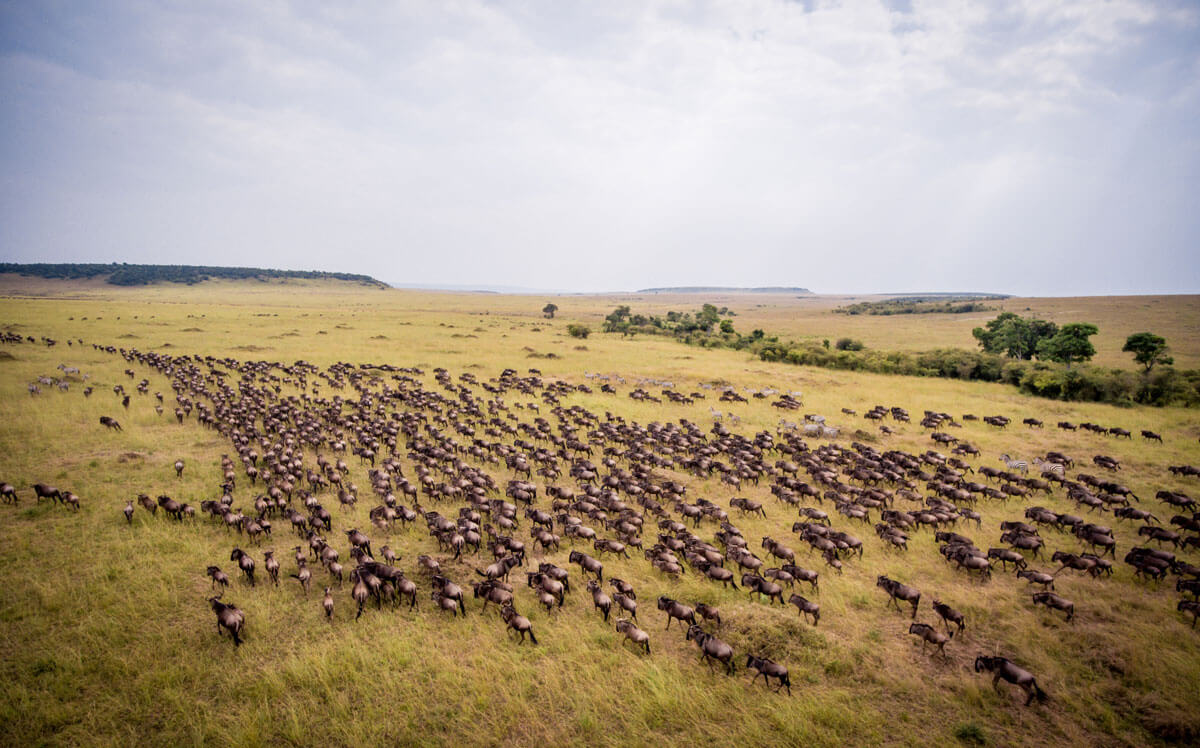
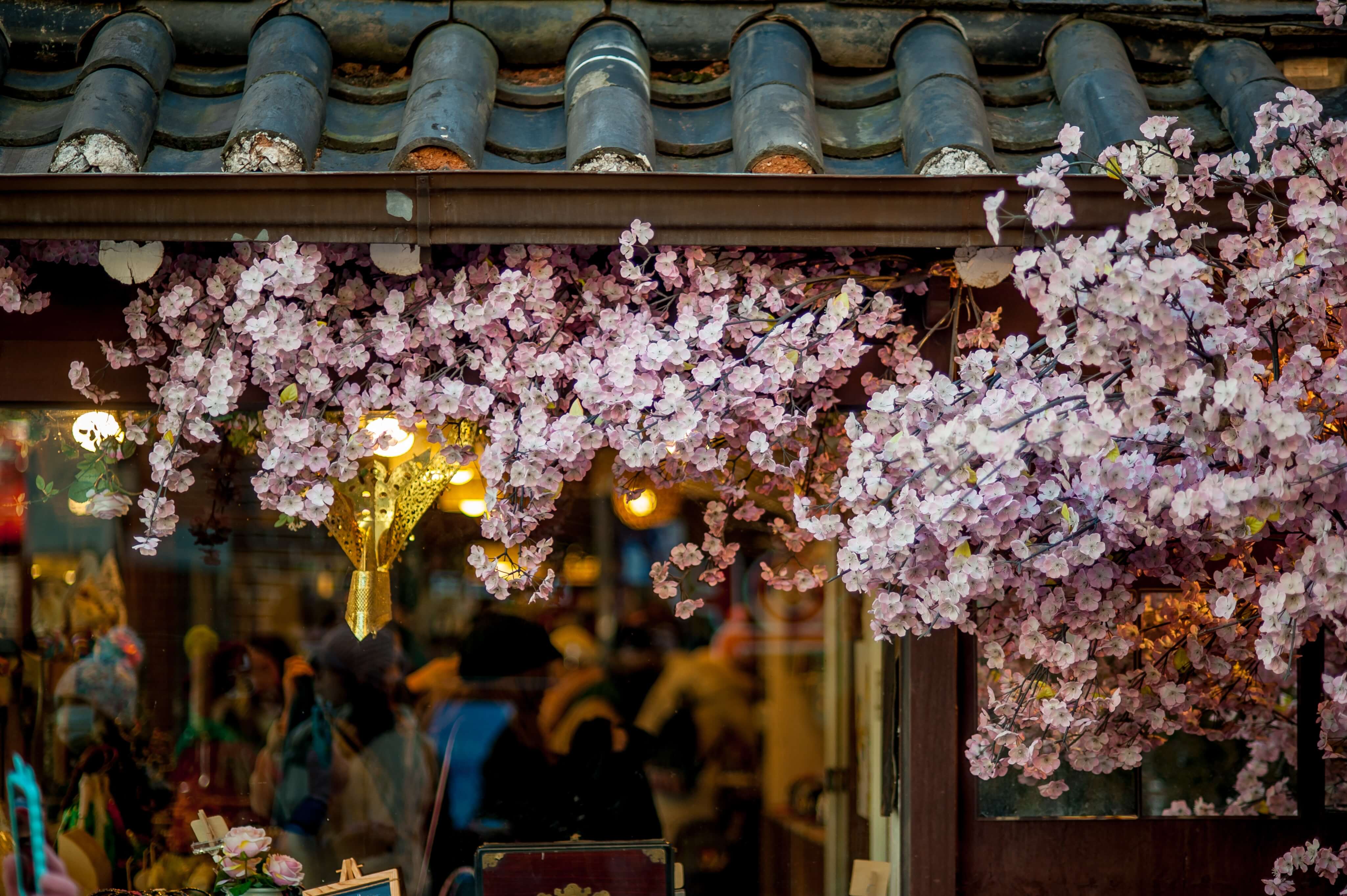
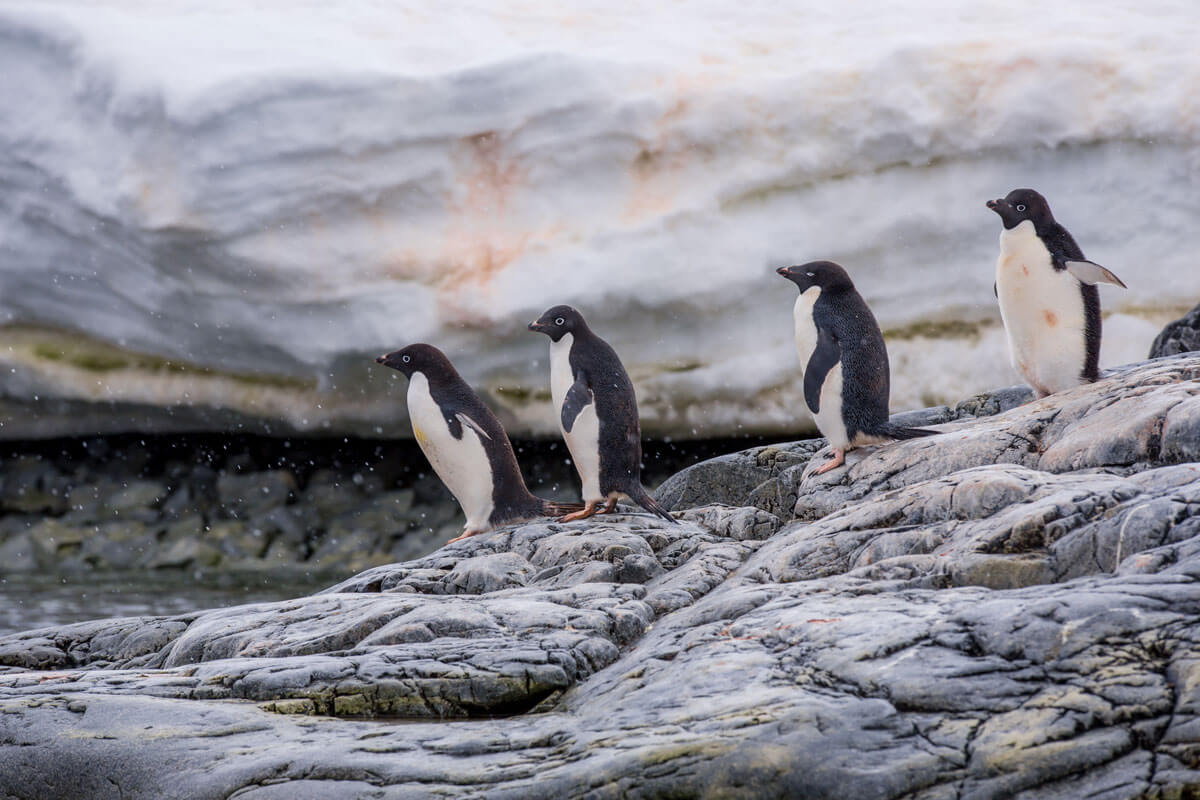





Recent Comments